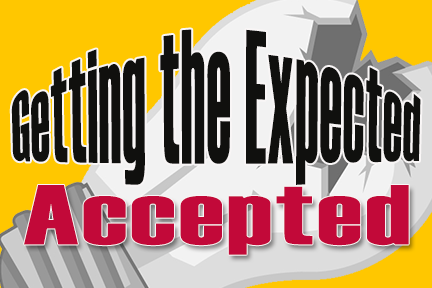 Getting the expected ACCEPTED by employees and others is a roadblock for many small business owners. Especially, when using VERBAL communications for their ideas and plans. Not to mention, explaining verbally how employees should perform important processes in operations. This is also known as, “training on the fly;” training off the top of your head without preparation.
Getting the expected ACCEPTED by employees and others is a roadblock for many small business owners. Especially, when using VERBAL communications for their ideas and plans. Not to mention, explaining verbally how employees should perform important processes in operations. This is also known as, “training on the fly;” training off the top of your head without preparation.
Owners must consider that, in a workplace, free-thinking adults hold a variety of views on how things in their space should function.
For example, one believes the workplace should run like a “family affair.” Another thinks more “controls” are necessary for maintaining workplace order and keeping everyone accountable.
There are countless beliefs for how a business should operate. Consequently, independent businesses, even those of the SAME industry, operate quite differently from each other.
For instance, many businesses rule by consensus. In other words, the owner takes a quick straw poll of key personnel, before making his or her decisions for operations.
In contrast, some business owners ask for input from employees and managers, but make the FINAL decision, despite opposition from employees. Making decisions as a majority of ONE.
To be blunt, we believe that the business owner’s opinion is THE most important! After all, the owner began with the vision for the business. They have the most invested, and suffer the MOST consequences when operations “bottleneck” or fail. In fact, a business’ success or failure rides on the owners’ ultimate decisions.
The Expected Correctly Communicated
The Expected outcome of an owner’s vision, plans or dreams hinges on correct communications.
Here are two NOT-so-good methods for communicating and operating a business:
- Business owner walks the floor of their business barking VERBAL commands to employees and/or managers, to keep the wheels of production turning.
- The owner uses emails and/or smart phones (ad nauseum) to communicate expectations, back and forth to key personnel.
Without a doubt, with either of these methods the owner’s continual access is critical to keeping operations operating.
Best Practice to Get the Expected, Accepted
Due to their frustrations, business owners often spew statements like the following:
- “I just can’t find anyone to do the job the way I do it!”
- “I’m tired of doing everything around here myself!”
- “Why can’t people do their job without fussing about it?”
- “If employees had to pay the cost of their mistakes, they wouldn’t make them!”
- “It takes too long to show someone how to do some tasks, so I do them myself.”
Truthfully, this is a clear signal that a business is using a “shoot-from-the-hip,” “Mom and Pop” style of operation. That’s the opposite of an orderly systematized operation.
This should STOP, unless an owner enjoys the feeling derived from running everything. To be fair, it can make owners feel important. At least for a little while, until reality hits that, “You don’t own a company, it OWNS you!”
At which point, owner burnout is just around the corner and getting what is “expected” ACCEPTED is just wishful thinking.
To unchain themselves from daily operations and to get their EXPECTED, ACCEPTED, a business owner MUST communicate in WRITTEN form—their vision, dreams, hopes, plans, operating methods, policies, etc. In other words, a comprehensive Operations Manual. Whereby, leaving nothing to speculation or employee interpretation.
Did I mention? Great systems do work as expected!

Recent Comments